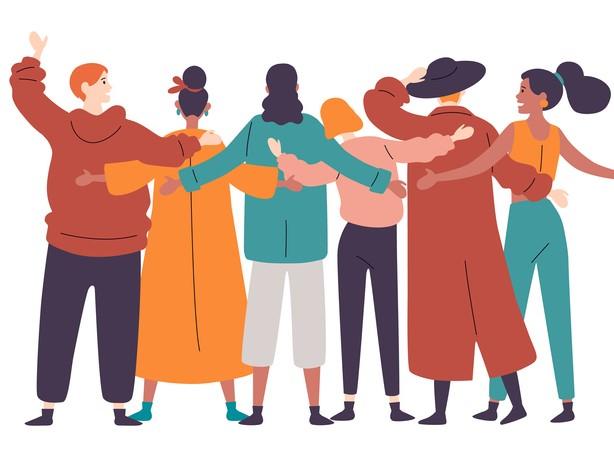The many functions of group work – whether it’s used as a short-term device or integrated more deeply within courses – make it a common pedagogical approach in UK higher education. At its most effective, students benefit from co-learning opportunities. The rationale for group work is most explicit when it is clearly aligned with course assessment. Group work potentially enables the university teacher to manage the cohort more effectively, through time-limited collaborative tasks, and it can help to engage large cohorts who may otherwise switch off during lectures.
Group work may serve to develop students’ transferable skills, such as communication and teamwork, often valued by prospective employers. And last, but not least, working on group tasks provides students with opportunities to socialise beyond their immediate cohort or established friends.
But many students report negative experiences, citing concerns about poor communication and conflict during group work. This could be due to incoming cohorts’ experiences through the pandemic or their access to social media and technology. A typical 18-year-old undergraduate, for example, will have spent a significant part of their education in the shadow of Covid, working online with limited opportunities to interact in-person with peers. They may spend time using apps or scrolling through social media. They may prefer working alone and see working in groups as unfamiliar, unwelcome or unnecessary.
- Supporting equity among students in group work
- Successful group work is all in the selection process
- Spotlight guide: Soft skills for hard times
So, how can teachers design and implement group work that engages students and enables them to meet planned outcomes? The focus here is on tasks that are sustained over time, possibly culminating in a group project or assessment.
We offer the following five considerations:
1. Design tasks that are best completed by a group
What type of tasks can best be completed by a group? One rationale for sustained group work is when the task cannot be completed by an individual student because it is sufficiently complex (for example, working on a wicked problem or a societal challenge) to justify collective work over individual assignments. Such a task requires a variety of knowledge and skills, and benefits from diverse and novel contributions. An alternative justification for a group work task is when it would be inefficient for an individual to do it by themselves because it would take too long (for example, a group of students could summarise a wide range of research more effectively than an individual student).
2. Clarify the pedagogic purpose of the group work task
Is the purpose of the group work task to produce a shared outcome quickly (for example, by delegating information collation) or is it to engage with collaborative learning (for example, peer-to-peer teaching and peer feedback)? When designing a collaborative group work task, the priority may be on the learning process, in which case the product (for example, a mind map) is secondary. However, there could be a dual focus: developing collaborative learning skills while producing a shared outcome (for example, a group presentation to stakeholders on possible solutions for a complex problem). Decisions about the pedagogic purpose will help determine whether students work in pairs, in threes or larger groups and how the task is assessed.
3. Provide students with a clear rationale for group work
What might motivate students to engage with group work? When introducing the group work activity, it is important to be transparent with students about why they will be working together. Let them know how the design of the task relates to their learning of course content or skills development. Of course, teachers don’t need to name specific outcomes; they could ask students to identify links to outcomes once the activity is completed.
When group work is aligned with learning outcomes or assessment, students are more likely to attribute high value to the task or to invest time and effort in its completion. Group work can also be beneficial for the teacher, who can take a break from teaching and adopt a more facilitatory role. Practising these dual roles gives the teacher alternative insights into student engagement with learning, which provides formative feedback on their teaching.
4. Provide clear criteria or explanation about group composition
Should the teacher facilitate group composition or leave it to the students? There are arguments for and against both approaches. Teacher-led group composition can be unpopular with students who prefer to work in friendship groups or want to replicate previous group compositions that worked well. While friendships and familiarity align with Maslow’s hierarchy of needs, with security and safety at the root of personal well-being, student choices may be influenced by group bias and exclude those who do not “belong”.
An alternative is to focus on achieving the task through collaborative learning. The teacher and students unpack the task and the associated learning outcomes, and identify the knowledge, skills and competencies required to address and complete the task. Students then form diverse groups that include members with and without the required knowledge and skills. Such an approach provides an authentic rationale for peer-to-peer teaching and interdependent learning among group members.
5. Guide students to work effectively in groups
What can be helpful for students when they find group work challenging? Without guidance, groups may struggle with conflict and competition as the participants try to establish roles and responsibilities – the so-called storming phase of group formation. Neurodivergent students or those with limited time may opt to work alone, if given the choice, to avoid challenges associated with collaboration and scheduling.
Working through challenging situations and including all students in groups can lead to rewarding learning experiences that necessitate the application of nuanced negotiation and mediation. But without appropriate guidance, group members can become demotivated and positions entrenched.
The teacher can support students by setting clear expectations about the group work task, the shared outcomes and the group work processes (for example, a clear expectation that groups co-create and apply their own group work contracts). Students can develop inter-relational skills and competencies when they have access to guidance on effective group work through online resources (for example, Group Work SDU 2025 group work guidance for students at the University of Southern Denmark), workshops and access to student counsellors.
Group work can be a useful and rewarding tool for teachers and students in higher education. By considering the points above, some of the barriers to effective group work implementation can be overcome.
Andrew Read is a senior lecturer at London South Bank University. Donna Hurford is a senior educational consultant in the SDU Centre for Teaching and Learning at the University of Southern Denmark.
If you would like advice and insight from academics and university staff delivered direct to your inbox each week, sign up for the Campus newsletter.




comment